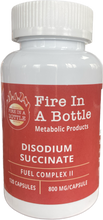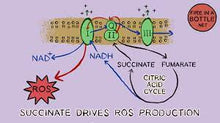One of the first things lost in both obesity and mammalian torpor is the activity of mitochondrial Complex II, AKA Succinate Dehydrogenase.
Complex II is driven by succinate, which is a normal metabolite of glucose produced in the Krebs cycle. Succinate-driven complex II activity drives ROS production, which in turn increases oxygen consumption (metabolic rate) and maintains NAD+ levels via the magic of the mitochondrial enzyme NNT. Look at how much succinate reduces the ratio of NADH to NAD+ when fed to mice. THIS is how you get out of reductive stress.

Dietary PUFA and stored MUFA driven by high activity of the enzyme SCD1 lead to low succinate dehydrogenase activity, high levels of NADH and low levels of NAD+. The result is a low metabolic rate. Succinate helps you replace the succinate dehydrogenase activity lost by the unsaturated fats.
The results of succinate supplementation in mouse models is nothing short of remarkable, including increased metabolic rate, rapid weight loss, beneficial changes in skeletal muscle composition, increased activity of mitochondrial enzymes and increased strength and endurance.
Look at the increase in mitochondrial activity due to succinate supplementation!







